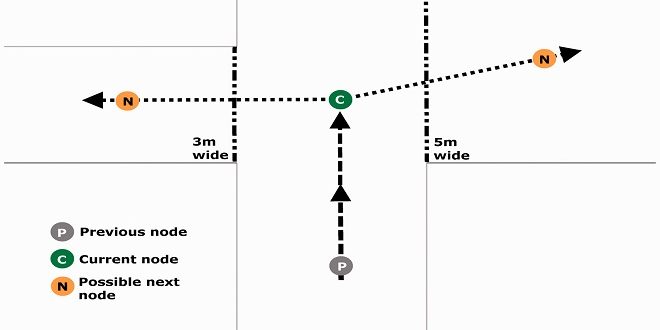As patients and visitors enter a hospital, one of the first things they encounter is the signage on the façade. These signs serve a crucial purpose beyond mere aesthetics – they guide individuals through the complex labyrinth of a healthcare facility. Effective signage in hospitals is crucial for streamlining patient flow, enhancing safety, and improving overall patient experience.
One of the key reasons why signage is so important in hospitals is because these facilities are often large and complex. With multiple floors, different departments, and a maze of corridors, they can easily confuse patients and visitors. This is where signage acquires crucial importance. Clear and well-placed signs can help individuals find their way to the right department, room, or service, reducing the chances of them getting lost or feeling overwhelmed.
The Role of Hospital Façade Design in Wayfinding
Hospital façade design goes hand in hand with effective wayfinding. The design of a hospital’s exterior can greatly impact the ease with which patients and visitors navigate the facility. A well-designed façade can serve as a visual landmark, helping individuals identify the hospital from a distance and orient themselves in the right direction.
When designing the façade, it is important to consider factors such as visibility, clarity, and simplicity. The signage on the exterior should be easily visible, even from a distance, and should use clear and legible fonts. The colour scheme and design elements should be consistent with the hospital’s branding and should not create confusion or distractions.
Another important aspect of hospital façade design is the use of architectural features to aid wayfinding. This can include elements such as prominent entrances, distinctive building materials, or unique landscaping. These features can serve as visual cues that help individuals identify different entrances or departments, making it easier for them to find their way.
Overall, the design of the hospital façade should be thoughtfully planned to ensure that it complements the wayfinding system inside the facility. A cohesive and well-integrated approach to both exterior and interior signage can greatly enhance the overall patient experience.
Understanding Hospital Wayfinding Systems
Hospital wayfinding systems are comprehensive strategies and tools designed to help patients and visitors navigate the facility efficiently. These systems encompass a wide range of elements, including signage, maps, digital displays, and staff assistance. Understanding and implementing an effective wayfinding system is essential for ensuring a smooth and stress-free experience for all users of the hospital.
One key component of a hospital wayfinding system is the use of directional signage. These signs provide clear and concise instructions on how to reach different areas of the hospital, such as emergency departments, outpatient clinics, or inpatient wards. Directional signage should be strategically placed at decision points, such as intersections or elevators, and should use universal symbols and arrows to convey the intended direction.
In addition to directional signage, hospitals can also incorporate other elements into their wayfinding systems. This can include digital displays with interactive maps, mobile applications for navigation, or even dedicated staff members to assist patients and visitors. By combining these different elements, hospitals can create a comprehensive wayfinding system that caters to the diverse needs of their users.
It is important to note that hospital wayfinding systems should be designed with accessibility in mind. Signs should be placed at appropriate heights for individuals with disabilities, and fonts and colours should be chosen to maximise legibility for all users. Clear and concise language should be used, avoiding jargon or complex medical terminology. By prioritising accessibility, hospitals can ensure that their wayfinding systems are inclusive and user-friendly for everyone.
Best Practices for designing Effective Hospital Signage
Designing effective hospital signage requires careful consideration of various factors. Here are some best practices to keep in mind when creating signage for hospitals:
- Clarity and simplicity: Signage should be clear, concise, and easy to understand at a glance. Use simple language and avoid overcrowding signs with excessive information.
- Consistency: Maintain a consistent design throughout the hospital to create a cohesive and unified wayfinding system. This includes using consistent fonts, colours, and symbols.
- Visibility: Ensure that signage is easily visible and legible, even from a distance. Use high-contrast colours and consider the lighting conditions in different areas of the hospital.
- Placement: Strategically place signs at decision points and intersections to guide individuals in the right direction. Consider the height and angle at which signs are placed to ensure visibility for all users.
- Consider accessibility: Design signage with accessibility in mind. Choose fonts and colours that are visible to individuals with visual impairment, and ensure that signs are placed at an appropriate height for individuals with disabilities.
By following these best practices, hospitals can create signage that effectively guides individuals through the facility, enhances safety, and improves the overall patient experience.
The Power of Signage in improving the Hospital Experience
Signage in hospitals plays a crucial role in streamlining patient flow, enhancing safety, and improving the overall hospital experience. From the moment individuals enter a hospital’s premises, signage on the façade should serve as a guide, and help them navigate the complex facility with ease and confidence.
Hospital façade design, in conjunction with effective wayfinding systems, ensures that patients and visitors can easily find their way to the right department or service. Clear and well-placed signage provides valuable information, promotes safety, and creates a welcoming environment. By following best practices in signage design, hospitals can create a cohesive and user-friendly wayfinding system that enhances the overall patient experience.
In conclusion, investing in effective signage in hospitals is essential for optimising patient flow, reducing stress, and enhancing safety. By prioritising signage as a vital tool, hospitals can create an environment that promotes efficient navigation, instills confidence, and ultimately leads to better patient outcomes.
 Isaiminia World Breaking News & Top Stories
Isaiminia World Breaking News & Top Stories




